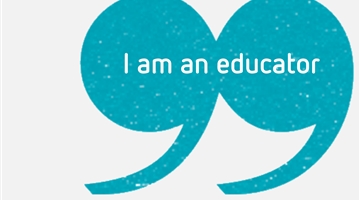In the Project deSHAME report, online sexual harassment is defined as unwanted sexual conduct on any digital platform and it is recognised as a form of sexual violence.
Online sexual harassment encompasses a wide range of behaviours that use digital content (images, videos, posts, messages, pages) on a variety of different platforms (private or public).
It can make a person feel threatened, exploited, coerced, humiliated, upset, sexualised or discriminated against.
This report specifically focuses on peer-to-peer online sexual harassment taking place between young people.
Four types of online sexual harassment
In this report online sexual harassment has been categorised in four main types. These different behaviours are often experienced simultaneously and can overlap with offline experiences of sexual harassment.
Explore:
A person’s sexual images and videos being shared without their consent or taken without their consent.
This includes a range behaviours, such as:
- Sexual images/videos taken without consent (‘creep shots’ or ‘upskirting’)
- Sexual images/videos taken consensually but shared without consent (‘revenge porn’)
- Non-consensual sexual acts (e.g., rape) recorded digitally (and potentially shared)
A person receiving sexual threats, being coerced to participate in sexual behaviour online, or blackmailed with sexual content.
This includes a range behaviours, such as:
- Harassing or pressuring someone online to share sexual images of themselves or engage in sexual behaviour online (or offline)
- Using the threat of publishing sexual content (images, videos, rumours) to threaten, coerce or blackmail someone (‘sextortion’)
- Online threats of a sexual nature (e.g., rape threats)
- Inciting others online to commit sexual violence
- Inciting someone to participate in sexual behaviour and then sharing evidence of it
A person being targeted by, and systematically excluded from, a group or community with the use of sexual content that humiliates, upsets or discriminates against them.
This includes a range behaviours, such as:
- Gossip, rumours or lies about sexual behaviour posted online either naming someone directly or indirectly alluding to someone
- Offensive or discriminatory sexual language and name calling online
- Impersonating someone and damaging their reputation by sharing sexual content or sexually harassing others
- Personal information shared non-consensually online to encourage sexual harassment (‘doxing’)
- Being bullied because of actual or perceived gender and/or sexual orientation
- Body shaming
- ‘Outing’ someone where their individual’s sexuality or gender identity is publicly announced online without their consent
A person receiving unwelcome sexual requests, comments and content.
This includes a range behaviours, such as:
- Sexualised comments (e.g., on photos)
- Sexualised viral campaigns that pressurise people to participate
- Sending someone sexual content (images, emojis, messages) without them consenting
- Unwelcome sexual advances or requests for sexual favours
- ‘Jokes’ of a sexual nature
- Rating peers on attractiveness/sexual activity
- Altering images of a person to make them sexual
Impact of online sexual harassment
Sexual harassment of this kind can make a person feel any of the following:
- Threatened or scared
- Exploited
- Coerced
- That their dignity is violated
- Humiliated or degraded
- Shamed or judged
- Upset
- Sexualised
- Discriminated against because of their gender or sexualorientation
- Feel guilty or that they are to blame
The experience and impact of online sexual harassment is unique to the individual and can be felt both in the short-term but also can have long-term impacts on mental health and wellbeing. Long term impacts can be amplified because of re-victimisation if content is re-shared online, or because the initial trauma of the incident resurfaces much later. It is important to recognise that there is no single way that a young person may experience online sexual harassment and that it might also affect others who witness it.
Gender and vulnerability
Such harassment takes place in a gendered context and is deeply rooted in structural relationships of inequality between women and men. This produces disproportionately negative outcomes and experiences for women and girls. Indeed, girls are more likely to be targeted with online sexual harassment than boys, particularly some forms, with these incidents often resulting in more negative consequences for girls.
Online sexual harassment can intersect with discrimination and hate crimes, relating to a person’s actual or perceived gender, gender identity, sexual orientation, race, religion, special educational need or disability. Young people in these groups may face unique forms of online sexual harassment, resulting in a more negative impact in both the short and long term, as well as multiple barriers that can prevent them from accessing support.
Peer to peer context
Among young people this is typically taking place in a peer-to-peer context, focused around schools and local communities, and very often being played out online in front of an active, engaged audience. Whilst it typically takes place amongst peers, it is also possible for adults to sexually harass young people (or other adults) online, although this is not explored within the scope of Project deSHAME.


